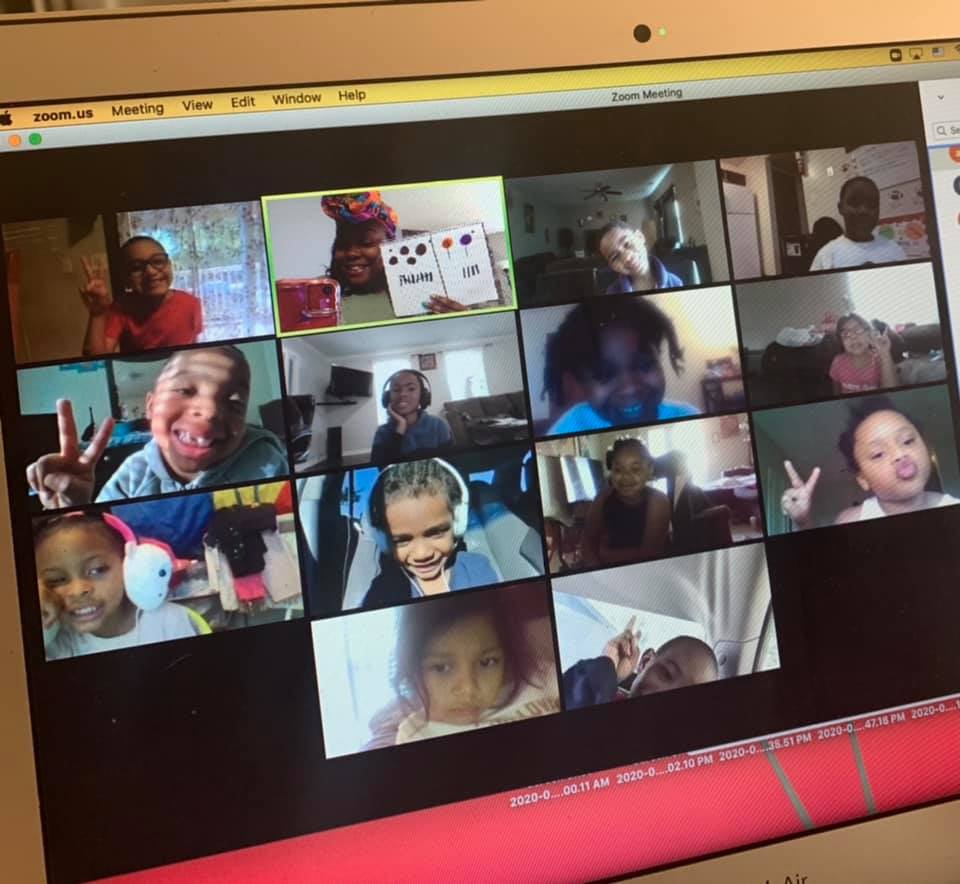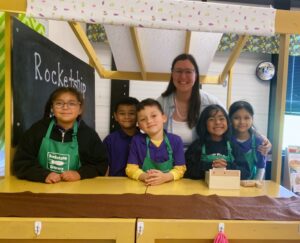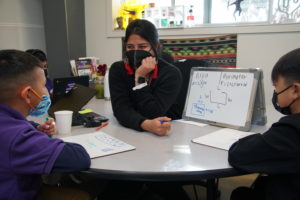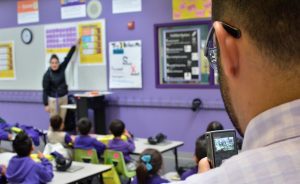
5 Tips for Engaging ALL Students Virtually
James Cross, 4th Grade Teacher, Rocketship Nashville Northeast Elementary
What does an engaged classroom look like? Do images of happy students raising their hand, sharing ideas, collaborating with peers, and completing assignments that challenge their learning come to mind? Now take a moment to think about what engagement looks like in a virtual classroom. Do your expectations for engagement change?
Teachers have always been experts at judging their students’ level of engagement when it comes to their work. If students aren’t “getting it,” we adjust. If students need more practice, we give it to them. If students are mastering the lesson, we challenge them to further explore their understanding. We plan activities where our students can apply their learning and demonstrate their understanding. Virtual learning, however, calls into question our ability to hold student engagement. We don’t always know what is going on behind the 2”x1” camera we see. This means that we now, more than ever, have to be intentional about how we engage our students.
Let’s take a look at 5 ways teachers are building engagement with their learners!
Tip #1: Leverage what you already have!
Virtual learning doesn’t mean you have to reinvent the wheel. Your school or district is likely using a virtual teaching program or software that comes with lots of engaging features. Start small, make sure the cameras are on! This helps everyone feel part of a school community. Teach your students how to mute and unmute. Is there a chat feature? A chat box is great for students to share their thoughts and engage with each other. Does your program have breakout rooms? We know that students learn better in smaller groups. Put a breakout room to work so students can talk and share freely with each other. You, as the teacher, can then circulate through breakout rooms to check in like you normally would. Check for additional features too, such as polls, reactions, and virtual hand-raising.
Tip #2: Simon Says this one is great!
Now that you have introduced those tech features, students need a chance to practice using them. Play a quick game of Simon Says to practice using the mute button, chatbox, and camera feature. Take a few notes of students who might need a little more help so you can check in with them later. If you find your students are still struggling to use these features, play another round to refresh their minds. Be intentional- if you notice a student who has it down, let them lead a round. Finally, make sure you are having fun too! Kids naturally feed off their teachers and if you are having fun playing a round of Simon Says so will they! Watch this example for inspiration!
Tip #3: Turn and talk with who you have at home!
Countless educators live by the 10:2 rule. For every ten minutes of teacher talk, it’s time to let our students have at least 2 minutes to share. As elementary teachers, we might aim for even more student talk time. Our goal might be 5:1. While students can’t easily talk to each other in a virtual class, they can still share at home. Have your students grab their favorite stuffed animal to share their thoughts with. If you have ever tried the tattling teddy, you know this will work!
Give your students a moment to collect their thoughts and then instruct them to share with their favorite stuffed toy. When students are done, call on a few to share what they told Mr. Teddy or Mrs. Bear. If stuffed animals aren’t their thing, try going back to those breakout rooms. Put them in groups of two or three and let them share. Students want to talk- so let’s get creative!
Tip #4: We love virtual teaching, yes we do, we love virtual teaching, how about you?
Chants, rhymes, and cheers have always been integral to student learning. We use them for the alphabet, letter sounds, math facts, reading skills, and just about everything. Chants help make what we learn sticky so we don’t forget it. I know that I will never forget that “eight times eight fell on the floor, picked it up, it was 64!” Chants and cheers are still effective strategies for online learning. Let your students all come off mute at the same time (it’s not as scary as it sounds!). Have your kids practice together. Chants and cheers will build unison and give your students an important method of remembering important facts. Here’s an example of one way chants help applaud a student’s answer.
Tip #5: Make learning a hoot with Kahoot!
You might already be finding some great online resources to use in your classroom. Maybe you use PearDeck, an online whiteboard, or online flashcards? One of our favorite tools is Kahoot. Kahoot lets you create questions and students get to answer them in real-time. They compete against each other to be the points leader. Besides getting to choose their own name, the best part is students are engaged because it feels like a game. Use Kahoot on a Friday to test their knowledge from the week. Reinforce a spelling pattern with questions that test their spelling mastery. Challenge their vocabulary skills by creating a vocabulary game. It’s really up to you with the content you want to create, but we guarantee students will love to play! Another great way to spark engagement and reinforce positive behaviors is by giving students Dojo Points. Watch the below video to learn more.
Student engagement is going to be tricky. It is going to be up and down. It’s also going to be what we make of it. Start small and get to know your students. Engagement always starts with knowing our students as learners and as people. Once we know our students, we can utilize numerous engagement strategies to bring out their joy for learning.
We can’t wait to hear how you are using these tips in your classroom! If you’re looking for a more research-based perspective on how to boost the quality of instruction while remote, then check out this insight report from The Learning Accelerator. You can also explore our Spark Engagement page for more tips to bring into your classroom tomorrow.
Published on September 5, 2020
Read more stories about: Tips for Engagement.
In the Classroom
Parent Conference Tips for First Year Teachers
Jeremiah David, Paraprofessional, Rocketship Dream Community Prep | January 6, 2025
Looking for top parent conference tips? Prepare with advice from our educators.
Read more ⟩First Year Teacher? Here are Five Mistakes to Avoid.
Jeremiah David, Paraprofessional, Rocketship Dream Community Prep | November 1, 2024
See what mistakes most first year teachers make and how you can get ahead this school year with some simple tips from a fellow educator.
Read more ⟩3 Classroom Systems New Teachers Swear By
Rocketship Public Schools | Sept. 30, 2024
As a first year teacher, establishing a smooth and productive classroom environment can feel a tad overwhelming. Thankfully, these simple strategies can go a long way.
Read more ⟩How Co-Teacher Collaboration Can Benefit Your Classroom
Featuring Alejandra Chavez, Education Specialist at Rocketship Mosaic Elementary | June 10, 2024
Hear from Ms. Aly about how a small team of educators can make a big difference in student outcomes through thoughtful planning, focused collaboration, and personalized accommodations. Ms. Aly was one of our highest-performing educators in California for the 23-24 school year.
Read more ⟩How to Spark Joy in ESL Classrooms with a Multilingual Learning Clubhouse
Featuring Ms. Amy De La Rosa, Multilingual Specialist, Nashville Northeast Elementary | June 1, 2023
Listen in to an audio interview with Amy De La Rosa, a Multilingual Specialist who has worked as an educator for over 14 years and found an innovative way to help her students learn English in a more accelerated, playful way.
Read more ⟩Supporting Parents of Multilingual Students in Family/Teacher Conferences
Emma Volpe, Rocketship United Academy | June 1, 2022
Get thoughtful insight on how to create a more inclusive family-teacher conference environment.
Read more ⟩5 Ways to Strengthen Relationships in the Classroom
James Cross, Assistant Principal, Rocketship Nashville Northeast Elementary | February 20, 2022
A new age of education calls for a new level of connection. Here are some key tips to strengthen relationships in your classroom this school year.
Read more ⟩5 Ways School Leaders Can Coach and Support Teachers
Eesir Kaur, Director of Professional Development | October 15, 2020
Are you a school leader looking to coach your teachers more effectively? Here's what works for us.
Read more ⟩











